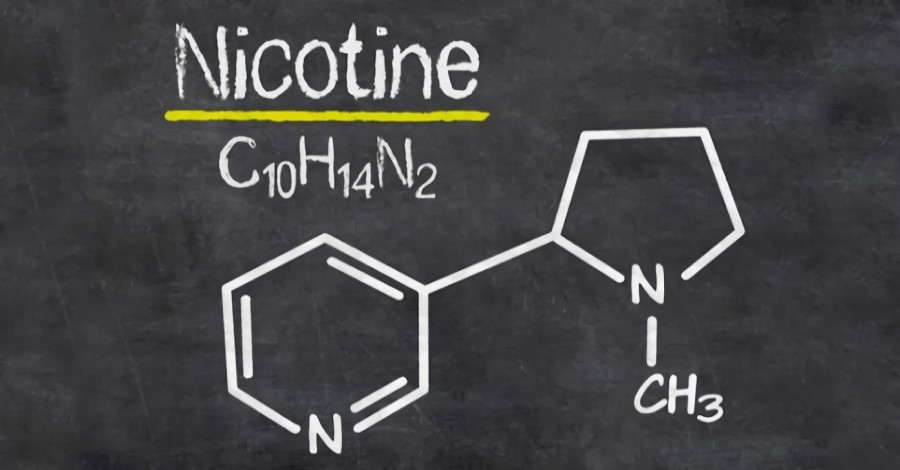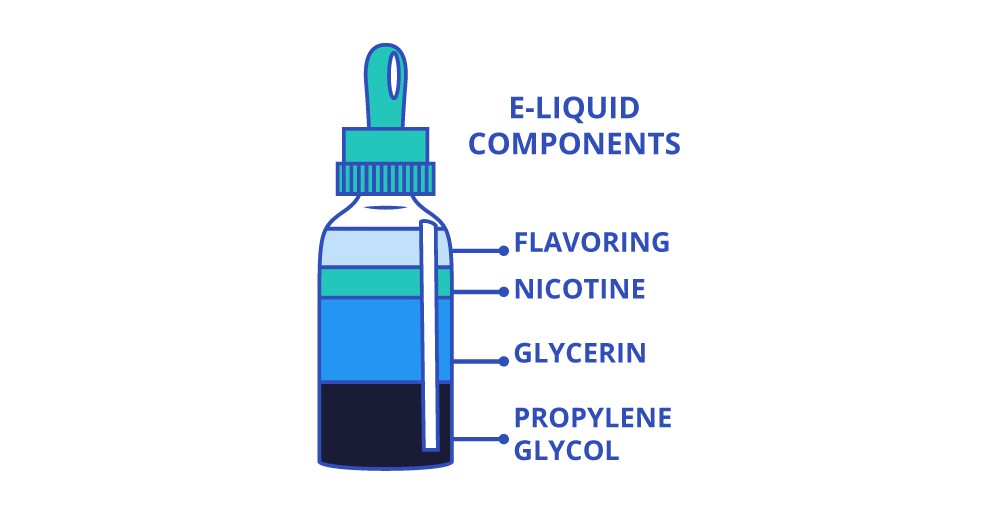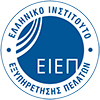The main ingredients in almost all of the e-liquids available on the market today are Propylene Glycol (PG), Vegetable Glycerin (VG), flavorings and of course, nicotine. Most of the e-liquids available will be PG based, while VG is generally an alternative for people with allergies to Propylene Glycol (PG). The strength is determined by how much nicotine is present in the e-liquid solution. When switching to vaping from a desire to quit smoking, it is recommended to try an e-liquid with a nicotine level that matches that of the cigarettes you used to smoke and then to further experiment in lowering the nicotine strength level.
Breakdown of the main ingredients:
PG - Propylene Glycol
- Clear, odorless and hydroscopic liquid. Chemical formula - C3H8O2.
- Non toxic for humans.
- Biodegradable.
- Produced on a large scale for production of polymers but also used in food processing.
- Its origin when used in e-liquids should be of high grade: 99.5% (Propylene Glycol USP/EP (pharmaceutical grade).
- It resembles the sensation of a “throat hit” we experienced as smokers.
- Compliments flavors in e-liquids.
- Small vapor production compared to VG.
- Low viscosity.
- A small percentage of the population might be allergic to it.
- Boiling point: 188.2 °C (370.8 °F; 461.3 K).
VG - Vegetable Glycerin (Glycerol):
- Clear, odorless liquid that is sweet tasting and non toxic. Chemical formula - C3H8O3.
- Non toxic for humans.
- Biodegradable.
- It is widely used in the food industry as a sweetener and in pharmaceutical formulations.
- Its origin when used in e-liquids should be of high grade: 99,5% (Vegetable Glycerin USP/EP (pharmaceutical grade)
- It has a “velvety” sensation to the throat.
- Big vapor production compared to PG.
- It mutes the flavors compared to PG.
- High viscosity.
- A small percentage of the population might be allergic to it.
- Boiling point: 290 °C (554 °F; 563 K).
Nicotine (Optional)
Nicotine is one of the four main elements inside our e-liquid, along with PG, VG and flavorings. Below you will find an explanatory guide about the liquid nicotine used in e-liquids.
What is nicotine?

Nicotine is an alkaloid extracted from the tobacco plant Nicotianatabacum. It can be synthesized but this is an expensive process so it is not commonly used. It is also found in small amounts in plants such as potatoes, tomatoes and eggplants. Nicotine works both as a relaxant and a stimulant, with people reporting effects such as mood elevation, alertness and calmness. It is physically and psychologically addictive, and many vapers who started out as smokers use e-liquids with varying levels of nicotine strength. Commercial e-liquid can be obtained without nicotine but it is usually sold with a big range of nicotine strengths.
The most common are:
- 6mg (low)
- 12mg (medium)
- 18mg (high)
These values project the amount of nicotine per ml of e-liquid. Some vendors represent this as a percent per solution. For example 1.2% instead of 12mg/ml. The amount of nicotine is the same, just displayed differently.
Food grade concentrated flavoring
Due to the development of the e-liquid industry there are infinite number of flavor options for a new vaper. However not all flavorings can be used to produce quality e-liquids. Nobacco uses high quality food grade flavorings suitable for vaping for the production of our e-liquid ranges. Flavoring is most of the time diluted in PG and gives a distinct taste to the final result. With the right combination it can mimic the taste of a real cigarette and also resemble a drink, fruit, sweet taste and even a combination of all the previous. Extra info: Some of the flavorings can cause a color change in our e-liquid over time as the flavor develops and intensifies (also known as steeping).
Water For Injection (WFI)
For the final production of commercial e-liquids Water For Injection is used in a small percentage (10% max) mostly for controlling the final viscosity of the e-liquid. This is quite handy especially if our e-liquid has a high VG ratio which is very viscous thus by using WFI we can achieve a better viscosity getting a better wick feeding performance from our atomizer tank.
















